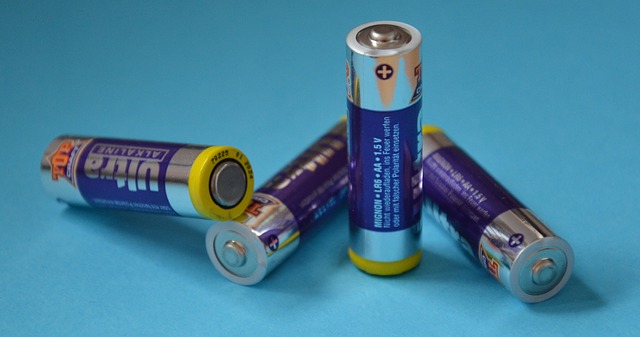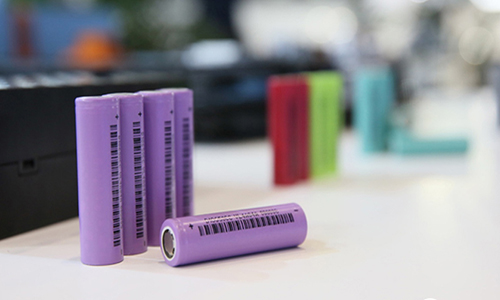Lithium Battery Ingredients Introduction, Components, and Process
Dec 25, 2019 Pageview:2087
What is the main ingredient in lithium batteries?
Lithium-ion batteries are used for almost all electronic devices and electronic vehicles. Despite being more expensive than conventional alkaline batteries, Lithium-ion batteries have a much longer lifespan.
Lithium-ion batteries are made from what are called cells. Every cell of those is composed of three components; a positive electrode, a negative electrode, and a chemical component called an electrolyte between the positive and negative ones.
The positive electrode in the cell is designed from Lithium-Cobalt oxide. The negative electrode is designed from graphite. The electrolytes are such as oxides and sulfides. The electrolyte must have a long shelf life and offer high mobility for Lithium ions. The electrolyte can be liquid, polymer, and solid-state ones.
What are lithium batteries made of?
Lithium-ion batteries are of all shapes and sizes nowadays. However, no matter the size or the shape of the battery they all look the same inside. In any given Li-ion battery pack there are certain things that are present:
Lithium-ion cells. They can either by cylindrically shaped like conventional AA batteries or they can be prismatically shaped.
Temperature sensors to monitor the temperature of the battery. Overheating can have catastrophic results.
Voltage converter and Regulator circuit. This is to maintain safe levels of the voltage and the current inside the battery pack.
Voltage tap, which acts as a monitor for the energy capacity of each individual cell inside the battery pack.
Battery charge state monitor. Which is a small computer that handles all the charging process. It makes sure the batteries are charged as quickly and as safe as possible.
An additional, optional shielded connector is sometimes present inside the battery pack, and it allows the power and information to flow in and out of the battery pack.
When charging or even during the usage of the battery, if it gets too hot, the computer (Battery Charge State Monitor) will shut down the power flow in an attempt to cool things down. If you try to use your device while in this hot state, this computer will prevent you from using it, and will even prevent you from powering on the device itself.
The Lithium-ion Cells
The lithium-ion cells have an outer case that is made of metal. It is important to use metal in the li-ion cells as the battery is pressurized. The metal casing has what is called a vent hole, which is basically a pressure-sensitive hole. In case the battery gets too hot that there is a risk of an explosion, this vent hole releases the extra pressure helping to rescue the situation.
Inside the metal case, there are three thin sheet layers that are:
A positive electrode.
A negative electrode.
A separator between the two of them.
These three thin sheets are submerged in an organic solvent, mostly made of ether. That solvent acts as the electrolyte for the battery.
The Anode and Cathode of Lithium-ion batteries
The Anode and the Cathode in the Li-ion battery are where Lithium ions are stored. The electrolyte inside the battery carries the positively charged lithium ions from the Anode to the Cathode and vice versa during the discharging and charging processes. This movement of the Lithium ions creates free electrons in the Anode, which in return creates a positive charge at the positive current collector. After that, the electrical current flows from the current collector to the negative current collector, operating your device in the process.
The Anode
The majority of the lithium ion batteries used Graphite as a material. The graphite used in the anode is either synthetically produced, which is called artificial graphite or mined from the earth, which is called natural graphite. The graphite is then processed before being used on a copper foil, which serves as the Anode in the Li-ion battery.
Lithium is used as ions salts dissolved in the electrolyte of the Li-ion batteries; however, lithium can be used as a material for the anode itself as well in some batteries.
In the Li-ion batteries, the anode material must meet some requirements like:
The material must be of good conductivity and porosity.
It should be lightweight and durable.
It must be of low cost to keep batteries cheap.
The material must match the voltage of the cathode of the battery.
The Cathode
There is more than one material option that is being used when manufacturing the cathode of the Li-ion battery. The material used in the cathode of the Li-ion batteries must be of extreme purity with no unwanted metal impurities. The cathode in the Li-ion batteries is a mixture of Lithium and other metals. While the anode material in the Li-ion battery is well optimized, the cathode material is open to enhancements, and today's researches are focused on this specific area.
The cathode of the Li-ion batteries has active materials. It is composed of Cobalt, Nickel, and Manganese presented in a crystal structure that forms a multi metal oxide material. Lithium is then added to the mixture at the final step.
How do you make lithium batteries?
Creating a Li-ion battery follows some simple steps:
Electrode Preparation
In this step, the material that will be coated on the anode and the cathode is mixed and prepared.
Raw metallic materials, mostly aluminum, is loaded into the coating machine.
Thin layers of Lithium and Carbon are then applied and added to the machine.
Through a continuous process, the material is fed to an oven where Carbon is being treated.
After the oven process, the product is fed to two separate lines where the anode and the cathode are being fabricated each having its own line.
After the electrodes (anode and cathode) are fabricated, they are fed to a machine where they are being squashed to thin layers so that they can be more foldable.
The final step of this process is the cutting process where the electrodes are cut to the proper width specified by the manufacturer.
Electrode Creation
In this process, the electrodes are taken and rolled to the proper size.
Once the anode and cathode are cut to the perfect size, they are matched together in pairs of exactly equal sizes.
After that, a thin layer is inserted between them (the separator).
The whole three layers (the anode, the cathode, and the separator) are folded together in a semi-automatic machine.
Electrolyte insertion
After preparing the electrodes in the previous step. Housing for them is made.
Plastics or PVC materials are used to make the housing for the electrodes.
The electrodes are then inserted into those housings.
They get thermally welded together on three sides, while the fourth side is left open.
Via the open side, the electrolyte is inserted onto the whole setup.
After that, the open side is sealed.
Now you have a Li-ion battery that is ready for its first charge.
Please note that dealing with Lithium-ion batteries can be very dangerous and result in serious harm or injuries. Unless you are a professional, please do not attempt the above steps by yourself.
Leave Message
Hottest Categories
-
Hottest Industry News
-
Latest Industry News












